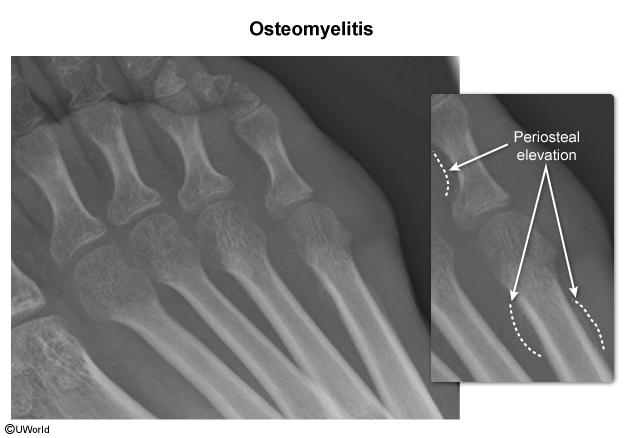Osteomyelitis
Article Sections
Introduction
Osteomyelitis is an inflammatory bone infection caused by various pathogens, most commonly bacteria. It can be acute or chronic and is characterized by progressive inflammatory destruction of the bone.
Pathophysiology
Osteomyelitis arises when bacteria infiltrate the bone tissue establishing a focus of infection. Persistent inflammation within the confined bony space leads to increased intramedullary pressure, which compromises blood flow and forces infectious exudate into the cortex and periosteum. Without treatment, the infection can lead to complications such as chronic osteomyelitis (sometimes with sinus tracts to drain away purulent material), abscess formation, and pathologic fractures.
Osteomyelitis can develop via hematogenous or nonhematogenous spread.
Hematogenous osteomyelitisHematogenous osteomyelitis occurs when microorganisms seed the bone following an episode of bacteremia and is more common in children. It usually affects the metaphysis of long bones (due to the high vascularization and slow blood flow in this region); there can be multifocal involvement. The infection is typically monomicrobial, with the most common causative organism being
Continue Learning with UWorld
Get the full Osteomyelitis article plus rich visuals, real-world cases, and in-depth insights from medical experts, all available through the UWorld Medical Library.
Images
